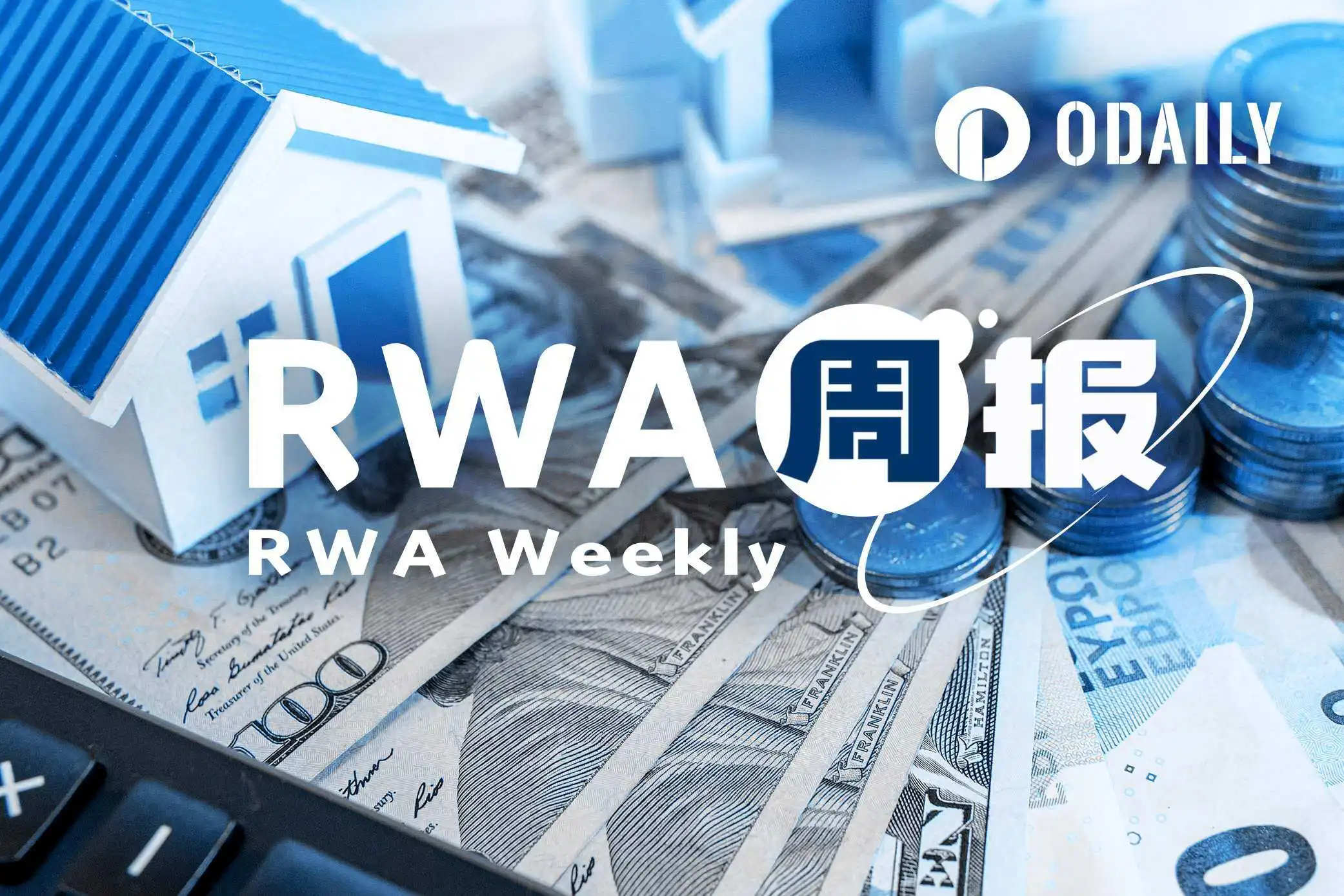Original Title: Narrative Crypto vs Usable Crypto
Original Authors: @0xnoveleader, Castle Labs; @BukovskiBuko3, The Big Whale
Translated by: Peggy, BlockBeats
Editor’s Note:
In the same week that S&P Global issued its first credit rating for Strategy (formerly MicroStrategy) and rated it "B-", discussions about Digital Asset Treasuries (DAT) entered a new phase. The symbolic significance of this rating extends far beyond the company itself, marking the first time the Bitcoin treasury model has been incorporated into the mainstream credit assessment framework.
This is both an acknowledgment and a collision. S&P views Strategy through the lens of traditional finance, believing that its structure of "assets being Bitcoin and liabilities being dollars" presents a fundamental currency mismatch; meanwhile, advocates in the crypto world insist that this is precisely a paradigm shift for a new generation of "asset-based companies."
The DAT model connects risks and may represent the future. It signifies a middle ground between crypto and capital markets—neither fully belonging to the "crypto circle" nor entirely to the "stock market." Strategy has been rated as "junk," but in a sense, this is the first time digital asset treasuries have qualified for a rating. In the future, how traditional rating agencies quantify Bitcoin risk and how investors perceive the "crypto version of Berkshire Hathaway" will determine whether DAT can transition from speculative narratives to a part of financial structure.
The following is the original text:
Introduction
Digital Asset Treasuries (DATs) are increasingly becoming a mechanism to attract traditional finance (TradFi) attention to blue-chip crypto assets (such as $BTC and $ETH). We are experiencing a wave of DAT projects, whose core idea is to accumulate digital assets as the core assets of a company's treasury.
The DAT model provides investors with a stock-like exposure to crypto assets—investors do not directly purchase cryptocurrencies but instead buy shares of companies that hold crypto assets. This model can also be understood as a "crypto asset wrapper," allowing investors to avoid dealing with complex self-custody processes or facing risks of data breaches and social engineering attacks from exchanges.
The most representative DAT currently is Strategy (formerly @MicroStrategy), which holds approximately 640,000 Bitcoins, accounting for 3% of the total Bitcoin supply. With the success of Strategy and the soaring price of its stock ($MSTR), this model has become extremely attractive to other companies—they can finance the purchase of crypto assets, thereby driving changes in the per-share asset support ratio, triggering market speculation on its net asset multiple (mNAV) and premiums/discounts.

This article aims to delve into the operational mechanisms of DATs, key indicators, current market landscape, participating companies, potential risks, and ultimately assess their long-term sustainability.
What are DATs? How do they operate?
The term DAT was born with the transformation of Strategy. Originally a software company providing business analytics services, Strategy transformed into a DAT in August 2020, after which its stock price surged over 2000%. While part of the reason is its status as the first publicly traded company to purchase Bitcoin on a large scale, it also validates the feasibility of the DAT model as a business opportunity.
At the core of DATs is the role of "asset accumulation tools for equity financing," raising funds through stock issuance to purchase crypto assets, thereby increasing the exposure of crypto assets on the company's balance sheet. Its valuation and operational metrics (such as NAV, mNAV, premiums/discounts) are highly dependent on the price fluctuations of the held assets.
Digital Asset Treasuries can be categorized into the following types:
Primary DATs: These are the most typical digital asset treasury companies that accumulate specific assets (such as BTC or ETH) through equity financing. Representative companies include Strategy and BitMine.
Secondary DATs: These companies do not fully adopt the digital asset treasury model but support their stock prices through other businesses and utilize digital assets for diversified exposure. These companies generate revenue from their main business and use part of that revenue to accumulate crypto assets. Representative companies include Tesla, Galaxy, and MARA.
Yield-Active DATs: These companies aim to generate income from their crypto assets. For example, Sharplink stakes most of its ETH and earns staking rewards from it.
Diversified DATs: These companies are still accumulating crypto assets but do not focus on a single asset; instead, they hold multiple assets. Representative companies include Nepute Digital Assets Corp (holding BTC, ETH, SOL) and BTCS Inc (holding ETH, ADA, SOL).

While this report will not strictly differentiate between these various types of digital asset treasury companies, it will select a few as case studies for in-depth analysis.
Key Terminology of DATs
To better understand the operational mechanisms of DATs, this section will introduce a series of key terms that are important indicators for assessing the health of a DAT.
Net Asset Value (NAV): Refers to the net value of the DAT treasury, calculated as the number of assets in the treasury multiplied by their dollar price. For example, if a DAT holds 10,000 BTC (with each BTC priced at $114,000), its NAV would be $1.14 billion.
Net Asset Value per Share (NAVps): NAV divided by the total number of diluted outstanding shares of the company. This metric reflects the value that each share should represent. If the market price is higher than NAVps, it indicates that the company's stock is trading at a premium; conversely, it indicates a discount.
Crypto Asset per Share (CPS): The number of crypto asset units represented by each share. It measures the quantity of BTC, ETH, or other assets corresponding to each share.
Market Value to Net Value Ratio (mNAV): The ratio of the company's market value to its NAV. If mNAV is greater than 1.0, it indicates that the stock trading price is above the treasury value (investors are paying a premium to gain crypto exposure, leverage, or options); if mNAV is less than 1.0, it indicates market skepticism, governance risks, or insufficient information disclosure, leading to a discount.
Accretion/Dilution Test: A new issuance of shares is beneficial to investors (accretion) only if the amount of crypto assets purchased with the newly issued shares exceeds the current CPS. The formula is as follows: ΔU/ΔS > U/S
Where:
ΔU: The number of newly acquired crypto assets
ΔS: The number of newly issued shares
U: The current amount of crypto assets held
S: The current number of outstanding shares
For example: A company plans to raise $1 billion, currently trading at a 40% premium (mNAV=1.4), with the treasury holding 200,000 BTC (NAV=$22 billion), and there are 20 million shares outstanding, with a total market value of $30.8 billion. The price per share is $1,540, so the company needs to issue about 650,000 shares to complete the financing.
After financing, the company purchases 9,000 BTC at $110,000 each, increasing the total treasury holdings to 209,000 BTC. The original CPS was 200,000/20,000,000=0.01, and the new CPS is 209,000/20,650,000≈0.0101, indicating that this financing slightly benefits investors.
Financing Mechanisms of DATs
DATs can raise funds for their treasury through various methods, primarily including:
At-the-Market Issuance (ATM Issuance)
The company establishes an ATM issuance plan with an investment bank to gradually sell shares in the market and use the proceeds to purchase crypto assets. This method is suitable when the stock trading price is above NAV and serves as a flexible, low-friction financing tool, but excessive use may lead to dilution of shareholder equity.Block Raises / Secondaries
The company issues a large number of shares at once and sells them to investors at a price slightly below the market price to execute large crypto asset purchases. This method can quickly replenish the treasury but may cause short-term dilution.Convertible Notes
The company issues bonds with fixed interest rates, maturity dates, and conversion terms (which can be converted into shares at a set price in the future). This method allows for fundraising without immediately diluting shareholders, but if the stock price rises and remains above the conversion price for a long time, the company may require the debt to be converted into equity, leading to dilution; if the stock price falls, the debt remains debt, facing repayment or refinancing risks.Preferred Stock
The company issues preferred stock to raise funds, which has superior rights in terms of dividends and liquidation compared to common stock, and may come with fixed dividends, conversion rights, or special rights. This method generally has a lower financing cost compared to common stock but creates a "senior equity" structure, compressing the upside potential for common stockholders.Operating Cash Flow (OCF)
The company does not raise funds through issuing new shares or bonds but instead uses part of its operating profits to purchase crypto assets. This is the most sustainable and least dilutive way to build a treasury, but the accumulation speed is slower.

Current DAT Landscape
Institutional interest in digital assets is growing, giving rise to a diverse array of DAT companies that are trying to capture one of the most important market narratives of 2025. Starting from Strategy, which initially focused on BTC, the DAT model has rapidly evolved to cover other mainstream public chain assets, such as Ethereum and Solana. Almost all DAT companies' management teams are focused on enhancing the core metric of "crypto asset units per share."
The DAT companies analyzed in this section represent the publicly traded companies with the highest market capitalization among various crypto assets. Among them, Strategy and Metaplanet together hold 64% of the total assets under management (AUM) of all BTC DAT companies, with Strategy alone accounting for 61.22%.

In terms of ETH DAT companies, @BitMNR accounts for 49.66% of the total AUM of ETH DATs, while Sharplink holds 14.72%. It is evident that early participants dominate both the BTC and ETH markets.

Strategy was the first to propose the concept of DAT in 2020, and it took the market four and a half years to gradually enter the mainstream stage. Today, new competitors have emerged in both the BTC (Metaplanet) and ETH (Bitmine and Sharplink) sectors.
Strategy is a pioneer in this field, continuously accumulating Bitcoin. Over the past five years, the company has held 640,250 BTC, with a current NAV of approximately $7 billion based on current prices. In 2025 alone, the company purchased 116,554 BTC, achieving a 26% increase in BTC.
From a timeline perspective, Strategy primarily adopted the ATM model for Bitcoin purchases, initially selling shares at a premium of up to 6 times, which has gradually fallen to the 2.5x–3x range, currently stabilizing at an mNAV level below 1.5x, with a current base NAV of 1.16x and a diluted mNAV of 1.293x.

MSTR's mNAV premium data source: BITCOINTREASURIES.NET
Currently, the most mainstream financing tools are preferred stock and convertible bonds, favored by hedge funds and institutional investors to hedge against the impact of ongoing equity dilution while maintaining continuous accumulation of BTC.
Due to its first-mover advantage and high recognition among global stock market investors (almost entering the S&P 500 index), Strategy has become the industry benchmark, even "too big to compare." This also means it bears a significant responsibility: if it fails, it could cause structural shocks to confidence in both the stock market and digital assets.
Another important BTC DAT company is @Metaplanet_JP from Japan. Originally operating in the hotel business, the company now holds over 30,823 BTC. It purchases BTC at extremely high NAV premiums, with premiums reaching as high as 8 times at one point during the year, meaning for every $1 of BTC held, it can finance $8. One reason for such high premiums is its listing on the Tokyo Stock Exchange. Compared to the Nikkei index, Metaplanet exhibits higher volatility, providing ordinary Japanese stock market investors with BTC exposure.
Now let's take a look at the development of ETH DATs.
BitMine was originally a Bitcoin mining company focused on immersion cooling data centers, and it transformed into an ETH treasury company in July 2025. Following closely is Sharplink, a company focused on sports betting marketing technology, which is currently the second-largest ETH DAT. Together, these two companies hold over 3.87 million ETH, with a total value exceeding $15 billion. Their earnings per share (EPS) are 189.1% for BitMine and 98.5% for Sharplink.
Similar to Metaplanet, these two companies also prefer to adopt an ATM equity financing strategy, selling shares when premiums exist to effectively raise funds without relying on dilutive block issuances or debt financing, thus achieving an increase in crypto asset units per share. Once the premium disappears and mNAV falls below 1, it will lead to dilution, further reducing the crypto asset units per share. Currently, Sharplink's mNAV is 0.92x, slightly discounted; BitMine's mNAV is 1.18, with a premium of about 18%.
One significant advantage of ETH DATs is the ability to earn native yields through staking ETH. This is an automated mechanism that can increase the number of ETH per share. Additionally, staking rewards can be used to enhance the annualized yield (APY), such as investing in DeFi protocols or repurchasing shares. Sharplink is adopting this strategy to offset the dilution effect brought by the ATM strategy.
Aside from MSTR, most DAT companies are still in the early stages. Aggressive capital-raising behavior reflects their desire to act quickly in a bull market to seize the opportunities brought by the integration of equity and digital asset markets.
Risks of the DAT Model
The core feature attracting capital inflows into DAT stocks is their "market value to net value ratio" (mNAV). Speculators flock to these stocks, hoping to buy shares before the prices of crypto assets rise, thus achieving returns of 1.5 to 7 times for every dollar invested. However, there is a key issue: investors are not directly purchasing Bitcoin or Ethereum through these companies but are buying a "volatility wrapper," the entire value of which is determined by the current trading mNAV of the DAT. Therefore, such investments carry significant risks, and market participants must remain vigilant.

One of the main risks of the DAT model comes from its business mechanisms for accumulating BTC and ETH. The most direct factor affecting stock prices is ongoing equity dilution. From 2022 to the end of 2024, Strategy is expected to dilute shareholders by an average of 45.88% per year; Metaplanet's equity dilution rate is projected to reach 98% by the end of this year. In comparison, BitMine and Sharplink also have very high dilution rates of 24.25% and 11.4%, respectively, primarily due to their use of the ATM model to purchase ETH. Sharplink's dilution rate is calculated quarterly (from Q1 to Q2), while BitMine's dilution rate is based on its $25 billion ATM plan under the current stock price's fully diluted estimate.
Due to negative operating cash flow (MSTR's operating cash flow for the second quarter was -$34 million, and Sharplink's was -$1.62 million), DAT companies typically choose the ATM model to purchase crypto assets. However, this method is only effective when there is a market premium; once a discount occurs, the company will be unable to maintain its purchasing pace, leading to stagnation in crypto asset units per share and further selling pressure from investors.
To avoid ongoing dilution, MSTR and other companies choose to finance through issuing convertible bonds. Convertible bonds are typically purchased by hedge funds that employ a "Delta-neutral strategy," as the bonds embed out-of-the-money (OTM) options. The funds establish short positions, creating continuous selling pressure.
Meanwhile, rising stock prices will increase the value of the bonds as OTM options appreciate. The bonds also come with a small annual interest, further enhancing returns. As the stock price approaches the conversion price, the bond's Delta increases, and its value rises accordingly.
Conversely, when stock prices fall, hedge funds can profit not only from their short positions but also because the bond value will not drop sharply due to the over-collateralization of BTC holdings relative to common stock, creating "option protection," or the convexity of the bonds.

Ultimately, convertible bondholders are often reluctant to convert to stock: during their holding period, they have the maximum BTC allocation rights in the event of company bankruptcy and can utilize volatility returns over the long term. The ideal scenario for hedge funds is to extend the debt— as long as the actual volatility of common stock is sufficiently high to support dramatic price fluctuations (requiring participation from speculative buyers), they will continue to hold the convertible bonds.
The third financing method is issuing preferred stock. This strategy was pioneered by Strategy, aiming to hedge against dilution without significantly increasing debt. Preferred stock typically offers annual dividends, but since DAT companies often have negative or very low cash flow, this further weakens their profitability.
In addition, there are other risks worth noting, including insufficient treasury transparency, risks in executing stock buybacks (due to lack of income or liquidity), liquidity risks during emergency sell-offs, and ongoing stock sales by company insiders, all of which collectively exert significant pressure on stock prices.
Recently, we have seen a substantial shrinkage in the market value of these DAT stocks: MSTR has fallen by 44%, and Metaplanet has dropped by over 70%. These risks have been fully priced by the market, indicating that the DAT model may be losing momentum, and explaining why, in the current bull market phase, DATs have underperformed compared to the crypto assets they hold.

Strategy vs BTC performance over the last three months

BitMine vs ETH performance over the last three months
Can DAT Surpass BTC and ETH?
Using Ethereum as treasury assets allows DAT companies to earn approximately 3.18% annualized yield through staking, which helps enhance the ETH per share metric. However, even with the most mature DeFi protocols, without additional capital injections, DATs will require a long time to significantly increase ETH per share, while also introducing counterparty risks. Although staking and yield farming can generate cash flow for ETH and other altcoin DATs, the current scale of these yields remains limited, making it difficult to provide substantial assistance. To truly build a self-sustaining ETH treasury flywheel, companies must accumulate sufficient capital to generate high enough yields to cover all expenses and enhance shareholder value.
As for whether yield-oriented DATs (such as ETH DAT) can outperform BTC DATs, the key lies in the market's preference for the assets they rely on. Currently, the market shows a stronger preference for BTC DATs, especially with MSTR's mNAV performance being more stable and stickier compared to BMNR and SBET.
The market has begun to price risks into these assets, leading to significant performance discrepancies among various DATs in Q3 compared to BTC or ETH, with the underlying assets outperforming their equity wrappers.
Due to the core business model of DAT being the purchase of underlying assets, its intrinsic value is difficult to exceed the net value of the assets held. Coupled with ongoing negative operating cash flow, dividend pressures, and rising debt levels, these are the main reasons for the continuous decline in multiples for most DATs.
Before making investment decisions, investors often need to weigh the opportunity cost of capital allocation. Below is a simplified example that illustrates this opportunity cost:

John plans to invest $10,000 and at the end of Q2 chooses to either directly purchase BTC and ETH in the spot market or ETFs, or buy shares of MSTR or SBET.
If John chooses to invest the entire $10,000 in the spot market, he will acquire: approximately 0.093 BTC (based on Q2 closing prices); over 4 ETH (based on Q2 closing prices).
If he instead purchases MSTR and SBET shares, he will acquire: 24.61 shares of MSTR; 1,064.96 shares of SBET (based on prices on June 30).
Multiplying the number of shares by the current BTC equivalent per share, John will hold approximately 0.04 BTC less than if he had directly purchased the spot assets, and worst of all, he will only hold MSTR shares instead of Bitcoin. Similarly, if he buys SBET shares, he will hold a full 1 ETH less than if he had directly purchased the spot assets.
However, it is worth noting that if John does not sell any shares by the end of Q3, he will realize a profit of approximately $8,000 on Sharplink shares, as its stock price has risen by 80%, outperforming the returns of the spot market and ETFs. On the other hand, his loss on MSTR shares is approximately -20.75%, representing a loss of the original portfolio value.

The opportunity cost of DATs is not only high, but retail investors also cannot truly own the underlying assets. In the event of company bankruptcy, the claims to the underlying assets belong to creditors and preferred shareholders. This raises serious questions about the sustainability of DATs as long-term investment tools.
However, there is still a differentiating factor that attracts capital: DATs offer the potential for amplified returns, making them more speculative compared to holding spot assets or ETFs, as demonstrated by the performance of Sharplink shares from Q2 to Q3.
Although under FASB accounting standards, the income statements of DATs may look good (allowing unrealized gains to be counted as profits), these gains are still marked to market and will only convert to free cash flow upon asset sale. In other words, these gains are merely changes in the book value of assets and cannot be converted into actual cash unless realized.
Theoretically, if a company can use excess cash for lending or create stable income through options contracts, these issues could be mitigated. However, each protocol integration increases counterparty risk, raising doubts about whether it is worth it. The market generally believes that once these companies begin to sell their holdings, it will be a fatal blow to shareholder confidence.
Sustainability Assessment
While there is no perfect set of assessment metrics to address the volatility of digital asset prices, this section will introduce several key indicators for a comprehensive evaluation of DAT performance.
We will use Strategy (MSTR) as an example to illustrate how to conduct assessments and scoring. The scoring range for each indicator is 0–5 points:
· Score ≥ 4: The indicator performs well
· Score = 3: The indicator performs moderately
· Score ≤ 2: The indicator performs poorly
· Score = 0: The indicator performs extremely poorly
1. Dilution Risk
Dilution risk arises when new stock issuances affect the per-share crypto asset units (CPS) of existing shareholders. If the CPS after issuance is lower than the current CPS, it is considered dilution; conversely, it is considered appreciation.
The method for assessing dilution risk is to track changes in CPS and compare CPS values before and after financing.
MSTR: Strategy frequently uses ATM equity issuance and convertible bond financing to acquire BTC. Since MSTR typically issues equity when the stock is trading at a premium (mNAV > 1), it can be considered "appreciative dilution." However, its reliance on continuous financing places its dilution risk at a moderately low level. Therefore, we give it a score of 3.

2. Leverage
Assessing the leverage level of DATs is key to tracking the debt instruments used to purchase digital assets, including convertible bonds, mortgages, or other similar financing methods.
A common metric for measuring leverage is the Debt-to-Equity Ratio, which is used to assess the impact on the company's leverage level during significant drawdowns of treasury assets and whether it could trigger a liquidity crisis.
MSTR: Strategy currently has a debt-to-equity ratio of 0.36, which is at a historical low level, categorizing it as low leverage. Therefore, we give it a score of 4.

3. Choice of Underlying Asset
The quality of the crypto assets held by DAT is key to whether it can align with investor interests. Most DATs revolve around blue-chip assets such as BTC, ETH, and SOL.
The advantage of ETH lies in its sustainable earning capacity, which can support company operations or expand treasury size. The per-share crypto asset unit (CPS) is also an important indicator. For example, the current annualized yield for ETH staking is about 3%. If a DAT holds $1 billion in ETH, it can earn approximately $30 million in additional income annually just through staking. The company can also choose to participate in more attractive earning opportunities such as lending or liquidity provision, but this also introduces counterparty risk, which Solana DAT also faces.
In contrast, BTC does not possess proactive earning capabilities; its appeal primarily comes from its positioning as "digital gold"—limited supply and monetary attributes. An increasing number of companies have included BTC on their balance sheets, reflecting its growing importance as an asset.
MSTR: Strategy holds BTC, and while its status as an asset is rising, it currently lacks a substantial earning mechanism (which may improve in the future). Therefore, we categorize it as moderate and give it a score of 3.
4. Multiplier to NAV Ratio (mNAV)
mNAV is one of the simplest and most effective indicators for assessing the status of DAT, calculated as the company's market value divided by its net asset value (NAV).
MSTR: Strategy currently has a market value of $82.3 billion, with an NAV of approximately $70 billion, resulting in a base mNAV of 1.16 and a diluted mNAV of 1.25.
Based on the base mNAV value, we can score according to the following criteria: mNAV > 1.2: score 4 or 5 (performs well); 1.0 < mNAV < 1.2: score 3 (performs moderately); 0.8 < mNAV < 1.0: score 1 or 2 (performs poorly); mNAV < 0.8: score 0 (performs extremely poorly).
Therefore, Strategy receives a score of 3 for this indicator.
5. Treasury Transparency and Governance
This is a somewhat qualitative indicator used to assess the quality and frequency of a company's disclosures regarding its treasury, reserve proofs, audit history, etc. Whether it provides public addresses for tracking is also an important reference.
Some companies avoid public addresses due to potential front-running issues: the purchasing behavior of DATs could drive up asset prices, which could then be exploited by the market.
MSTR: Strategy maintains limited transparency regarding reserve proofs and is often criticized by the market. Additionally, its governance structure is relatively complex, involving various tools such as preferred stock and convertible bonds. Therefore, we give it a score of 2.
6. Liquidity and Cash Runway
This is a quantitative indicator used to analyze the company's current cash flow situation and whether it needs to sell crypto assets to maintain operations in the event of problems.
The assessment method is to divide the company's monthly operating expenses by its cash holdings to determine its runway. Having at least one year of cash runway is considered good practice.
MSTR: Strategy currently has cash assets that account for only 0.07% of the company's total assets, indicating an extremely low cash ratio. Therefore, we give it a score of 1.

To help readers better understand the overall performance of DATs, we have included six key indicators in the assessment chart, including: dilution risk, leverage level, quality of treasury assets, multiplier to NAV (mNAV), transparency and governance, and cash runway.
Remember: the higher the score, the better the DAT performs on that indicator (for example, a higher leverage score indicates a lower debt level and more stable performance).
Using Strategy as an example, its average score across the six dimensions is 2.83 points (out of a maximum of 5 points).

Conclusion
The development of DAT in the industry has been quite significant, with a cumulative net asset value (NAV) of approximately $108 billion, accounting for about 2.5% of the total cryptocurrency market capitalization. This figure is already impressive, and the largest participant, Strategy, holds 3% of the global Bitcoin supply. Beyond these numbers, the DAT model itself is highly attractive, serving as a "equity-financed asset accumulation tool" that allows traders and institutions to gain exposure without directly holding or trading crypto assets. Its core logic is to exploit the premium or discount of company stock for arbitrage.

Today, the coverage of DAT has expanded from Bitcoin and Ethereum to other mainstream public chain assets such as @Solana. These newly added assets provide more leverage opportunities for DAT, such as generating yields through DeFi. These yields can be used for company operations or to enhance business metrics. For example, staking ETH can increase the ETH holdings in the company treasury, thereby enhancing the value per share of ETH, which is a crucial metric for investors when evaluating stocks.
The growth of DAT and its key business metrics are highly dependent on the price performance of the digital assets held. During periods of increased market volatility, its mNAV may decline significantly.
Ultimately, the surge in the number of DATs and NAV also reflects the growing interest in digital assets from both institutions and retail investors, which is a positive signal for the entire industry. However, any investor participating in such assets should fully understand the potential risks, as outlined in this report.
免责声明:本文章仅代表作者个人观点,不代表本平台的立场和观点。本文章仅供信息分享,不构成对任何人的任何投资建议。用户与作者之间的任何争议,与本平台无关。如网页中刊载的文章或图片涉及侵权,请提供相关的权利证明和身份证明发送邮件到support@aicoin.com,本平台相关工作人员将会进行核查。




